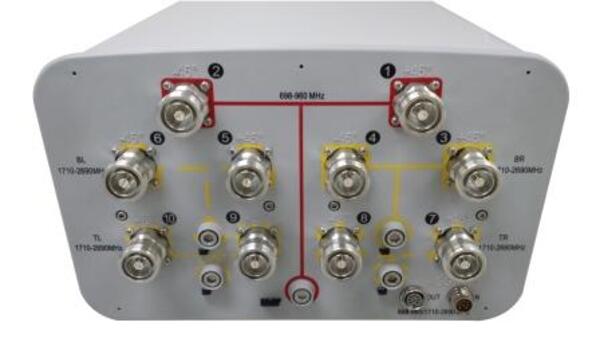 In some industries, it is common to find complaints about standards and regulatory requirements. They conjure up images of audits, extensive paper trails and major time and resources invested for seemingly little reward. However within the wireless industry, antenna standards are a worthwhile and important thing – and I’d like to tell you why.
In some industries, it is common to find complaints about standards and regulatory requirements. They conjure up images of audits, extensive paper trails and major time and resources invested for seemingly little reward. However within the wireless industry, antenna standards are a worthwhile and important thing – and I’d like to tell you why.For a long time in our industry there was a lack of specific standards – in particular how base station antennas are measured and compared, meaning that operators struggled to evaluate exactly which antennas were right for their needs. So the NGMN Alliance set about developing and implementing a set of standards known collectively as BASTA (after the Base Station Antenna Standards working group), with a view to making antenna selection easier and more cost-effective. As with standards in other industries, adherence to BASTA can also deliver improved network performance in the shape of greater coverage and capacity plus enhanced Quality of Service (QoS) to end-users.
There are a number of areas where the new BASTA standards can bring great positive improvements and enhancements to a wireless provider’s operations:
- Procurement – Previously, making direct comparisons between various antennas was difficult bordering on impossible because specifications and measurement units varied so much.
- Network Performance – The BASTA recommendations put in place directions to set minimum expected levels of antenna performance.
- Planning Ahead for Growth – With standards in place, it is easier to formulate a roadmap and bring other components into the mix to make future network expansion a simpler but more strategic exercise.
- Standardizing the Measurement of Performance – Prior to BASTA, the performance characteristics of base station antennas can vary from manufacturer to manufacturer, and this sometimes led to differences in the way specifications were listed. The ensuing confusion can impact the purchasing process but also the entire network planning and key performance indicators.
Ultimately, the BASTA standards have been designed to make life easier for the entire industry. Choosing the right antennas is vital both at the network design stage and also if upgrading an existing network. These standards have not been formulated to add confusion and red tape to the process, but to reduce complexity and help wireless operators make level playing field comparisons of antennas. Not all regulations and standards are there to make things complicated – some are genuinely there to help.
To learn more, see my complete blog post on ETTelecom’s TeleTalk blog. You can also download the BASTA standards from our website and register to access Kevin Linehan’s recent white paper about them, Time to Raise the Bar on Base Station Antennas: Evolving Technology Drives Adoption of Recommended Standards. Kevin spoke to RCR Wireless at the recent LTE North America event, where he explained BASTA and provided an update about antenna technology – see the video.







